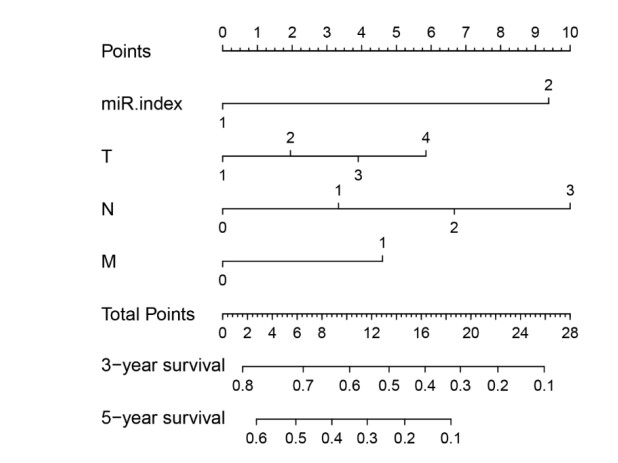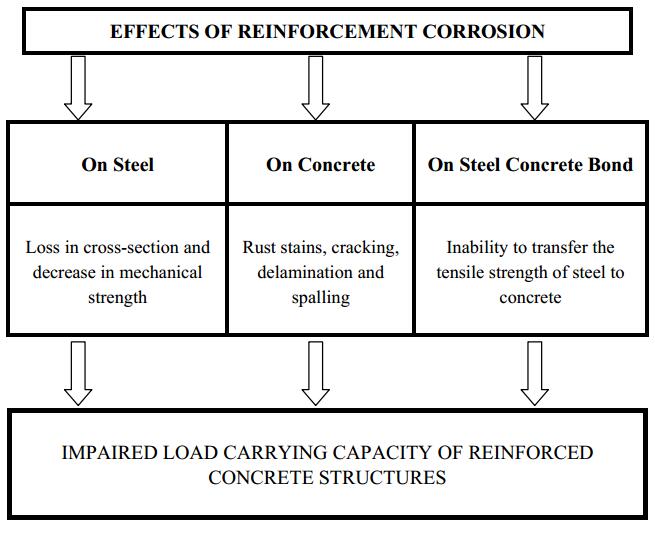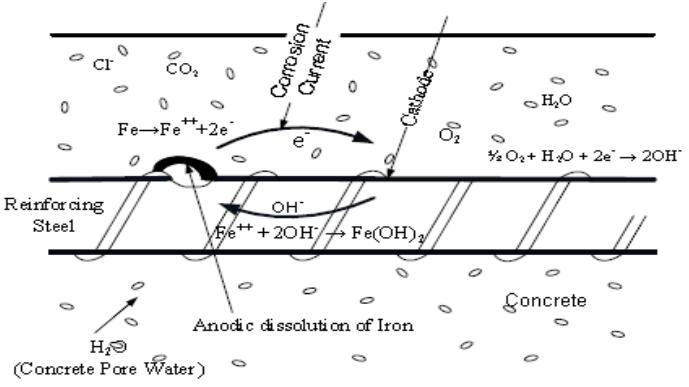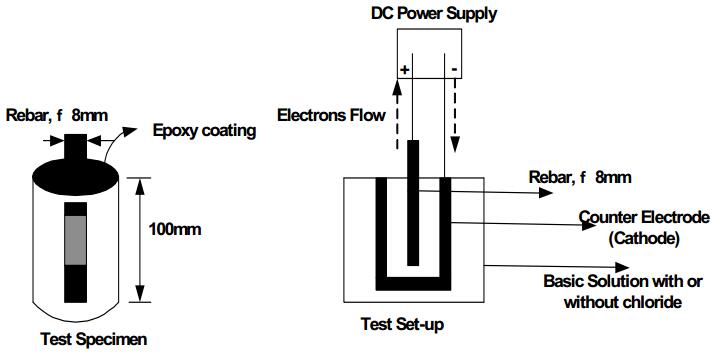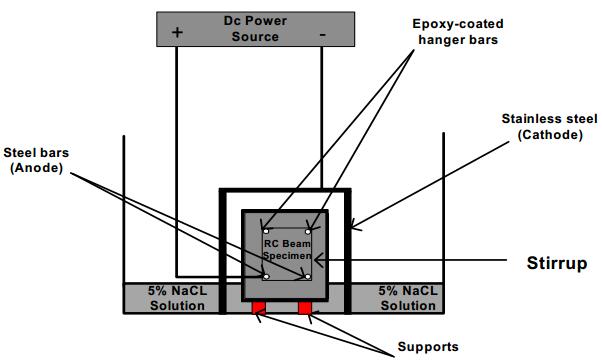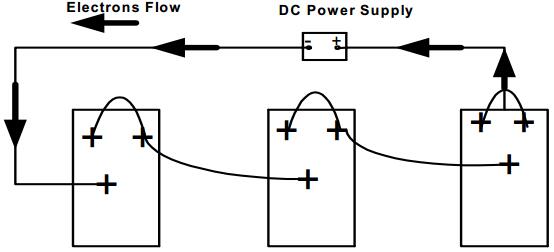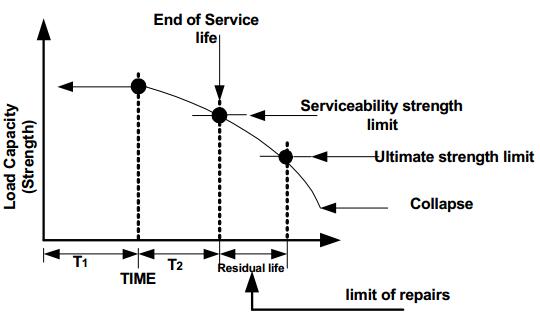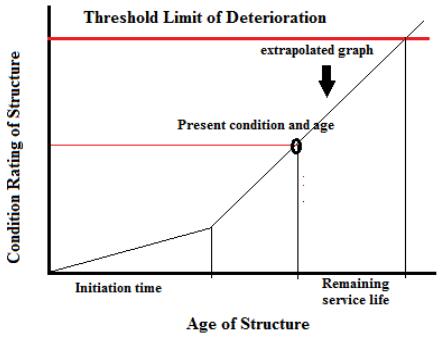This paper imparts a review study on the causes and factors responsible for corrosion, its initiation and propagation mechanism inside the structures, leading to a better discernment of the problem associated with the durability of the existing structures. This study employs all necessary information related to the corrosion activity, fostering the researchers towards explicating some productive outcome to enhance the durability characteristics as well as the service life of reinforced concrete structures. Different techniques like, Impressed current technique (normally in a range of 1 mA/cm2 to 4 mA/cm2) has been adopted by several authors to induce corrosion artificially to better correlate the result with the natural form of corrosion in the structures. This paper particularly emphasizes on residual flexure and shear capacity of reinforced concrete sections undergoing corrosion mechanism, the effect of which leads to a reduction in strength of up to 50%–60%. Several empirical relationships for the prediction of residual load capacity (flexure and shear) of a reinforced-concrete members and relationships for the surface crack width (lying in a range of 0.05 mm to 15 mm) and weight/mass loss (average loss of 15%–30%) were established based on the data obtained by various experimental observations.
1.
Introduction
Lung cancer are the most common causes of cancer-related deaths worldwide, which accounts for over 25% of all cancer-related deaths [1,2]. Lung cancer is classified into four main histological categories: lung adenocarcinoma (LUAD), lung squamous cell carcinoma (LUSC), large cell lung carcinoma (LCLC) and small cell lung cancer (SCLC). Recent development in molecular targeted therapies have markedly improved the survival of individuals with LUAD.
Risk stratification and survival estimation are very important to guide personalized treatment decision in patients with cancer. The principal clinical determinant in the therapeutics option and prognosis prediction for most solid tumors is tumor status, characterized by TNM staging system. However, there are heterogeneous clinical outcomes in patients sharing similar clinical features, indicating that TNM staging system is insufficient in risk stratification and the management of tumors could be improved by combining bio molecular signatures with traditional TNM staging system.
miRNAs are short (approximately 18–24 nucleotides) noncoding RNAs and are common mechanisms of the posttranscriptional gene expression [3,4,5]. miRNAs play important roles in various process of tumor genesis and development [6,7]. They are highly conserved and their dysregulation are observed in all the types of tumors [6,7,8]. As miRNAs are very stable due to their resistance to RNase activity and to inferior circumstances [3], they can serve as cancer markers. Furthermore, the miRNA signature associated with survival outcome will be helpful to elucidate the mechanisms of miRNAs in lung cancer as well as develop novo therapeutics. In fact, a number of miRNAs have been characterized as promising molecule biomarkers for diagnosis, prediction of treatment efficacy, recurrence, metastasis and prognosis in patients with head and neck cancer [9,10], lung cancer [11,12,13,14,15,16,17], breast cancer [18,19,20,21], gastric cancer [22], pancreatic cancer [23], colorectal cancer [24,25], prostate cancer [26], cervical cancer [27,28] and bladder cancer [29].
In our present study, a prognosis predicting model was constructed by a combination of miRNA expression profile and TNM classification parameters, and the prognostic model was visualized with a nomogram.
2.
Methods
2.1. miRNA expression data and clinical information
The miRNA expression data (Data S1) and corresponding clinical information (Data S2) were downloaded from The Cancer Genome Atlas (TCGA) database (https://cancergenome.nih.gov/) at March 2019. There were 1881 miRNAs from 567 samples, including 521 LUAD tissues and 46 adjacent normal lung tissues, which were collected from patients with LUAD. Individuals with missing records in overall survival, endpoint event, sex, age at diagnosis, smoking history, TNM stages, cancer status, postoperative treatment, radiotherapy and treatment outcome, were excluded. Individuals whose survival time shorter than 2 months were also excluded, because they are likely to die from causes other than cancer. 460 individuals with LUAD were included in Cox regression analysis and randomly assigned into two distinct subetaoups, 306‐patient training set and 154‐patient validating set, at a ratio of 2:1, when visualizing the prognostic model with a nomogram.
2.2. Differentially expressed miRNA screening
The expression data for miRNAs was normalized by log 2 transformation. Differential expression analysis between two groups (cancer vs control) was performed through Bayesian test with package ‘limma’ [30] for R (v3.6.3) [31] on the criteria of |log 2 FC (fold change)| ≥ 1 and P value < 0.05 [32,33,34].
2.3. The value of miRNA signatures and clinicopathological characteristics in survival prediction
The differentially expressed miRNA data and clinical data were combined through function ‘merge’ in R. Then the possible prognostic value of differentially expressed miRNAs and clinicopathological parameters (194 differentially expressed miRNAs, T stage, N stage and Metastasis status) were assessed by univariate Cox regression analysis with R package ‘survival’ [35]. Subsequently, the candidate miRNAs and clinicopathological parameters with P value < 0.1 (41 miRNAs, T stage, N stage and Metastasis status) were further evaluated by multivariate Cox regression analysis with R package ‘survival’ [35].
miRNA index was calculated by a linear combination of miRNA expression levels weighted by regression coefficient (β) from multivariate Cox regression analysis [10,11,12,19,21,25,28]. The formula was as follows: miR.index = βgene1 × exprgene1 + βgene2 × exprgene2 + … + βgenen × exprgenen, where “expr” indicated the expression levels of miRNA. With the median miR.index as the cutoff point, patients were stratified into two groups: low risk group (<median miR.index) and high risk group (>miR.index). Kaplan-Meier survival analysis was performed for the low and high risk groups with R package ‘survival’ [35] and ‘survminer’ [36].
A nomogram was generated to visualize the effect of the miR.index and clinicopathological parameters on the survival of patients with LUAD in the training set, using R package ‘rms’ [37]. Subsequently, the prognostic model was tested by calculating the C-index and drawing the calibration curve in the training set and validating set, respectively.
The aforementioned methods used in this study were illustrated in a flow diagram (Figure S1).
2.4. Prediction of target genes of the identified prognostic miRNAs and function enrichment analysis
The target genes of the identified prognostic miRNAs were predicted using miRTarBase (Release 7.0, http://miRTarBase.mbc.nctu.edu.tw/) bioinformatics analysis tools, which contains a great number of experimentally validated miRNA target genes. These target genes were then incorporated into Gene Ontology (GO) functional enrichment analysis and Kyoto Encyclopedia of Genes and Genomes (KEGG) pathway enrichment analysis via the online bioinformatics tool, the Database for Annotation, Visualization, and Integrated Discovery (Release 6.8, https://david.ncifcrf.gov/).
2.5. Statistical analysis
All statistical analyses were performed with R. Log-rank test was conducted to compare the difference for survival. Chi-square test was employed to test the clinicopathological parameters between the low risk and high risk groups. All statistical tests were two-tailed and P values < 0.05, except for P value < 0.1 in the univariate Cox regression analysis, were regarded as significant.
3.
3.Results
3.1. Clinicopathological characteristics of enrolled patients
Totally, 460 patients with LUAD were enrolled in the present study. The detailed clinicopathological characteristics of enrolled patients were shown in Data S3.
3.2. Identification of differentially expressed miRNAs
A total of 194 differentially expressed (99 up-regulated and 95 down-regulated) miRNAs were identified between LUAD tissues and matched normal tissues, based on the cut-off criteria of (|log 2 FC| > 1.0 and P < 0.05). The differentially expressed miRNAs were presented in Data S4.
3.3. The value of miRNA signatures and clinicopathological characteristics in survival prediction
A set of 41 miRNAs, T stage, N stage and Metastasis status, which had potential relationship to patient survival, were screened out by univariate Cox proportional hazards regression analysis (Data S5). These candidate miRNAs and TNM classification parameters were further verified by multivariate Cox proportional hazards regression analysis. Nine miRNAs (hsa-let-7i, hsa-mir-1976, hsa-mir-199a-1, hsa-mir-31, hsa-mir-3940, hsa-mir-450a-2, hsa-mir-4677, hsa-mir-548v and hsa‐mir‐6803) and N stage were identified as independent prognostic indicators for patients with LUAD (Data S6). Patients in low risk group had a superior overall survival compared to those in high risk group (89.4 months vs 38.2 months, P = 1e-08) (Figure 1). The demographic and clinicopathological characteristics between patients of the two groups were presented in Table 1. Among these nine miRNAs, hsa-mir-1976, hsa-mir-199a-1, hsa-mir-4677, hsa-mir-548v and hsa‐mir‐6803 were positively correlated with the overall survival, hsa-let-7i, hsa-mir-31, hsa-mir-3940 and hsa-mir-450a-2 were negatively correlated with the overall survival.
3.4. Target prediction and function analysis
A total of 1757 target genes of the nine miRNAs were collected from the miRTarBase database (Data S7). The GO biological processes were mainly enriched in regulation of transcription, apoptotic process and response to heat or toxic substance (Data S8). The GO molecular function were linked to protein binding, transcription factor binding, nucleic acid binding and protein tyrosine kinase activity (Data S9). In addition, the KEGG pathways were significantly enriched in mRNA surveillance pathway, transcriptional misregulation in cancer, pathways in cancer, viral carcinogenesis and adherens junction (Data S10).
3.5. Visualization of the prognostic model with a nomogram
A nomogram was generated to illustrate the relationship between prognostic indicators and the predicted survival outcomes of patients with LUAD. As shown in Figure 2, miR.index, T stage, N stage and Metastasis status were associated with survival. The clinicopathological parameters between the training set and validating set were well balanced (Table S1). The C-indexes were 0.68 and 0.72 in the training and validating set, respectively. The both C-indexes were close to or greater than 0.7, which confirmed the reliability of the model. Predictive accuracy of the model was further tested by calibration curves comparing actual 3 or 5-year overall survival (proportion) with predicted 3 or 5-year overall survival probability, both in the training and validating set (Figures S2–S5).
4.
Discussions
LUAD is one of the most fatal malignancies worldwide [1,2]. The prognosis of patients with LUAD would be improved to some extent if tumor behavior could be predicted before initial treatment. Accurate prediction is definitely based on the clinicopathological characteristics, the identification of novel biomarkers and the elucidation of the precise molecular mechanisms underlying LUAD occurrence and development. The TNM staging system, based on the clinicopathological characteristics of cancer, is insufficient in risk stratification and prognosis prediction, and the prediction power could be enhanced when combined with molecular biomarkers.
miRNAs are small non-coding RNAs that regulate gene expression [3,4,5]. They are involved in carcinogenesis and are presented as potential diagnostic or prognostic biomarkers in cancers [6,7]. Several miRNA markers have been identified for prediction of treatment outcome, recurrence, metastasis and prognosis in patients with cancers [9,10,11,14,15,16,17,18,19,20,21,22,23,24,25,26,27,28,29], including LUAD [14,15,16]. Li et al determined that miR-101-1, miR-220a, miR-450a-2 and miR-4661 were related to survival outcome in patients with LUAD [14]. Lin et al proposed a four miRNAs signature (miR-148a-5p, miR-31-5p, miR-548v and miR-550a-5p) associated with prognosis in patients with LUAD [15]. Interestingly, the miRNA signatures obtained by various studies do not overlap, or just overlap partly, perhaps due to the variability in the methods used to identify differentially expressed miRNAs and screen out risky miRNAs. In most of the aforementioned studies, risk score or prognosis index were constructed with linear combination of miRNA expression levels multiplied by Cox regression coefficient (β). Bias is likely to occur when explain the contribution of risk score or prognosis index to survival, because there was significant difference among the expression levels of each individual miRNA. To avoid this possible bias, we normalized the expression levels of miRNAs by their quantile distribution. Lin et al removed miRNAs with expression levels of zero in ≥ 50% of the patients, because they thought the feasibility of implementation could be enhanced [15]. But to our opinion, some miRNAs downregulated in cancer could be missed when this part of the data was excluded in analysis.
In our research, we identified nine miRNAs (hsa-let-7i, hsa-mir-1976, hsa-mir-199a-1, hsa-mir-31, hsa-mir-3940, hsa-mir-450a-2, hsa-mir-4677, hsa-mir-548v and hsa‐mir‐6803) associated with overall survival in patients with LUAD. Among them, miR-31, miR-450a-2 and miR-548v have been reported previously to be related to clinical outcome in patients with LUAD [14,15].
To gain a deep understanding of the nine miRNAs, we obtained the target genes of these nine miRNAs, and predicted the biological functions and pathways associated with their targets using bioinformatics analysis. The target genes of the nine miRNAs were mainly enriched in key cancer-related biological processes and pathways, such as cell proliferation, cell differentiation, transcription regulation, cell transformation, cell cycle, response to drug and apoptosis. The results suggested that these miRNAs played an important role in the occurrence, development and prognosis of LUAD.
Despite the potential ability of our model to predict prognosis in patients with LUAD, it had some limitations. The utility of different TNM staging system (3rd to 7th edition) and the incomplete records about treatment information (surgery, chemotherapy, radiotherapy and molecular targeted therapy) might cause biases in our analysis. Therefore, the prognostic value of the nine-miRNA signature is warranted for further validations.
5.
Conclusions
The prognostic model constructed with nine miRNA expression profile and TNM classification parameters can predict the survival in patients with LUAD, and the predictive power of the model are warranted for further validations.
Acknowledgments
The authors want to thank professor Zhongxin Li for his kind help in revising the manuscript.
Conflict of interest
The authors declare that there are no conflicts of interest.
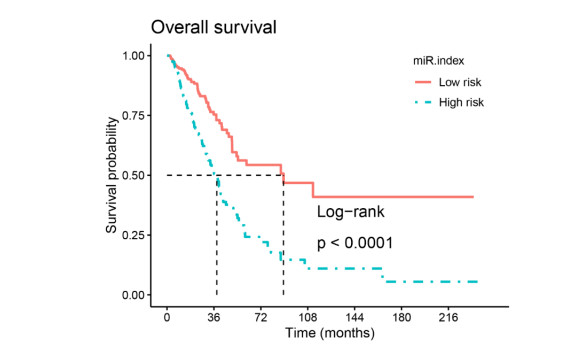









 DownLoad:
DownLoad:
